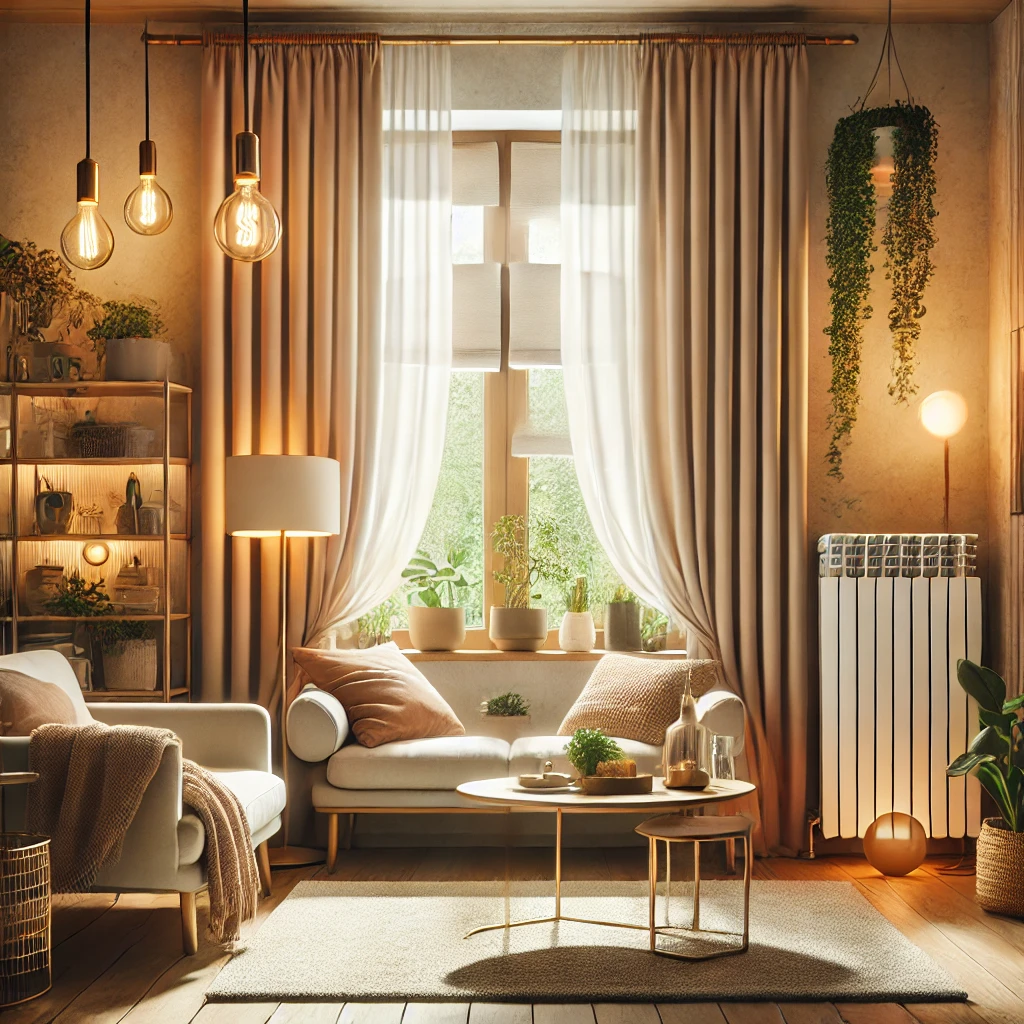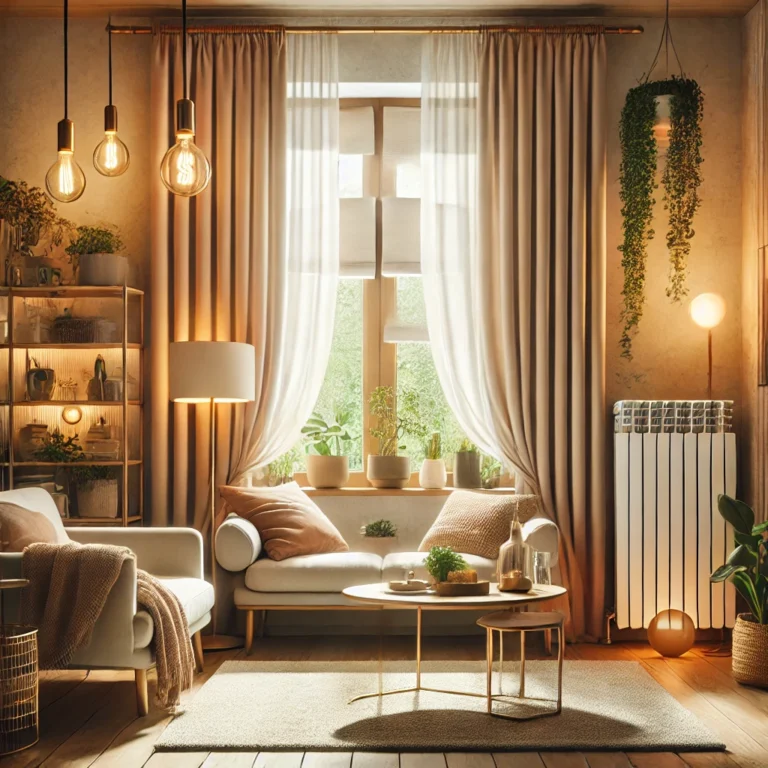Physical Address
304 North Cardinal St.
Dorchester Center, MA 02124
Physical Address
304 North Cardinal St.
Dorchester Center, MA 02124


As temperatures drop, keeping your home warm without relying too heavily on heating systems can be a challenge. Energy-efficient curtains offer a practical, sustainable solution to reduce heat loss while lowering your energy bills. Let’s explore how these curtains work, their benefits, and tips for choosing and using them effectively.
During colder months, up to 30% of heating energy can be lost through windows, according to the U.S. Department of Energy. Energy-efficient curtains can significantly reduce this loss by providing insulation, creating a barrier that traps warm air inside. For eco-conscious households, this not only saves money but also reduces carbon emissions, making it a sustainable choice for winter.
These curtains work by using materials that either reflect or trap heat, helping maintain a comfortable temperature indoors. They can also be useful in hot climates, as they block sunlight and keep rooms cooler.
Understanding the different types of energy-efficient curtains will help you choose the one that best suits your climate and needs.
Thermal curtains are made from thick, insulated fabrics that prevent heat from escaping. They often contain layers of acrylic foam or similar material sandwiched between decorative fabrics. Thermal curtains are excellent at blocking drafts and keeping rooms warm during winter.
Example Tip: Thermal curtains are ideal for bedrooms and living rooms where you spend the most time, as they provide a cozy, warm atmosphere.
Blackout curtains are designed to block out light, making them ideal for bedrooms. Their heavy, opaque fabric also helps trap heat, making them energy-efficient. They’re particularly effective in colder climates, where keeping heat inside is a priority.
Find blackout curtain options here.
Although not technically curtains, cellular shades offer a unique honeycomb design that traps air within its layers. This design provides excellent insulation for both warm and cold weather, making them versatile for year-round use. Cellular shades are available in various colors and light-filtering levels.
Example Tip: Use cellular shades in rooms with large windows or sliding doors to reduce heat loss effectively.
If you live in a cold climate, opt for thermal or blackout curtains that offer thicker insulation. In warmer climates, lighter, reflective fabrics may be enough to keep the heat out without making rooms feel stuffy.
Layered curtains with an insulating backing provide better thermal efficiency. Curtains with acrylic or foam backing are particularly effective in cold climates as they trap warmth.
Curtains that reach the floor or windowsill are more effective at reducing heat loss than shorter curtains. Floor-length curtains prevent drafts from coming in through the bottom of the window, providing better insulation.
Closing your curtains at night helps keep the warmth in and the cold air out. During the day, open curtains to let in sunlight, which naturally warms your home.
Example Tip: Set a daily routine to open and close your curtains based on the sun’s schedule. This small habit can make a noticeable difference in indoor temperatures.
Tiebacks or holdbacks can help you maximize natural light and warmth during the day. Tie your curtains to the side to let in sunlight, then close them in the evening to retain the day’s warmth.
Curtains alone can make a difference, but combining them with well-sealed windows increases energy efficiency. Apply weatherstripping or caulk around window frames to prevent drafts from entering your home.
Example Tip: Pairing energy-efficient curtains with a draft stopper at the base of your windows can create an extra layer of insulation.
Double rods allow you to hang two sets of curtains, such as a lightweight curtain paired with a thermal or blackout curtain. This setup lets you adjust for varying temperatures, as you can close the thicker layer when it’s cold and keep the lighter layer open when it’s warmer.
Maria, a teacher from Canada, wanted to reduce her heating costs without sacrificing comfort. She invested in thermal curtains for her bedroom and living room, closing them each evening and opening them during the day. By following this routine, she noticed a substantial difference in warmth and her monthly energy bill. In fact, her heating expenses dropped by nearly 20% during the winter months!
Maria’s experience highlights how effective energy-efficient curtains can be as a simple, sustainable solution for reducing heating costs.
Energy-efficient curtains are an affordable, practical way to keep your home warm, reduce energy consumption, and save money. By choosing the right type of curtains, layering fabrics, and establishing a routine for opening and closing them, you can make a significant impact on your energy usage. Small changes like this contribute to a more sustainable lifestyle and reduce your carbon footprint.
Question for You:
Have you tried using energy-efficient curtains? What other methods have you found effective in keeping your home warm and sustainable? Share your experiences in the comments and explore our other articles for more eco-friendly tips!
Let’s work together to make our homes more sustainable, one curtain at a time!